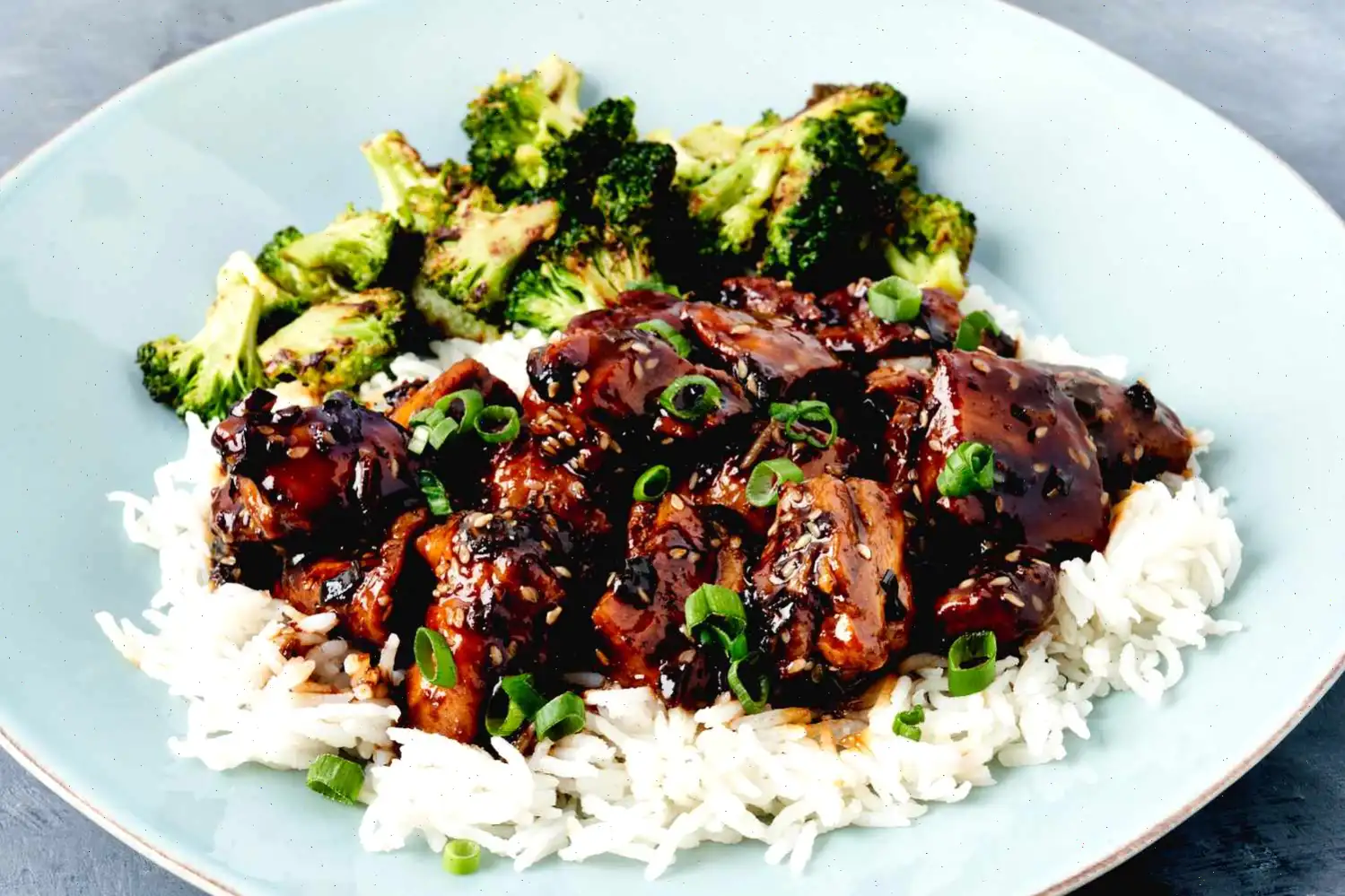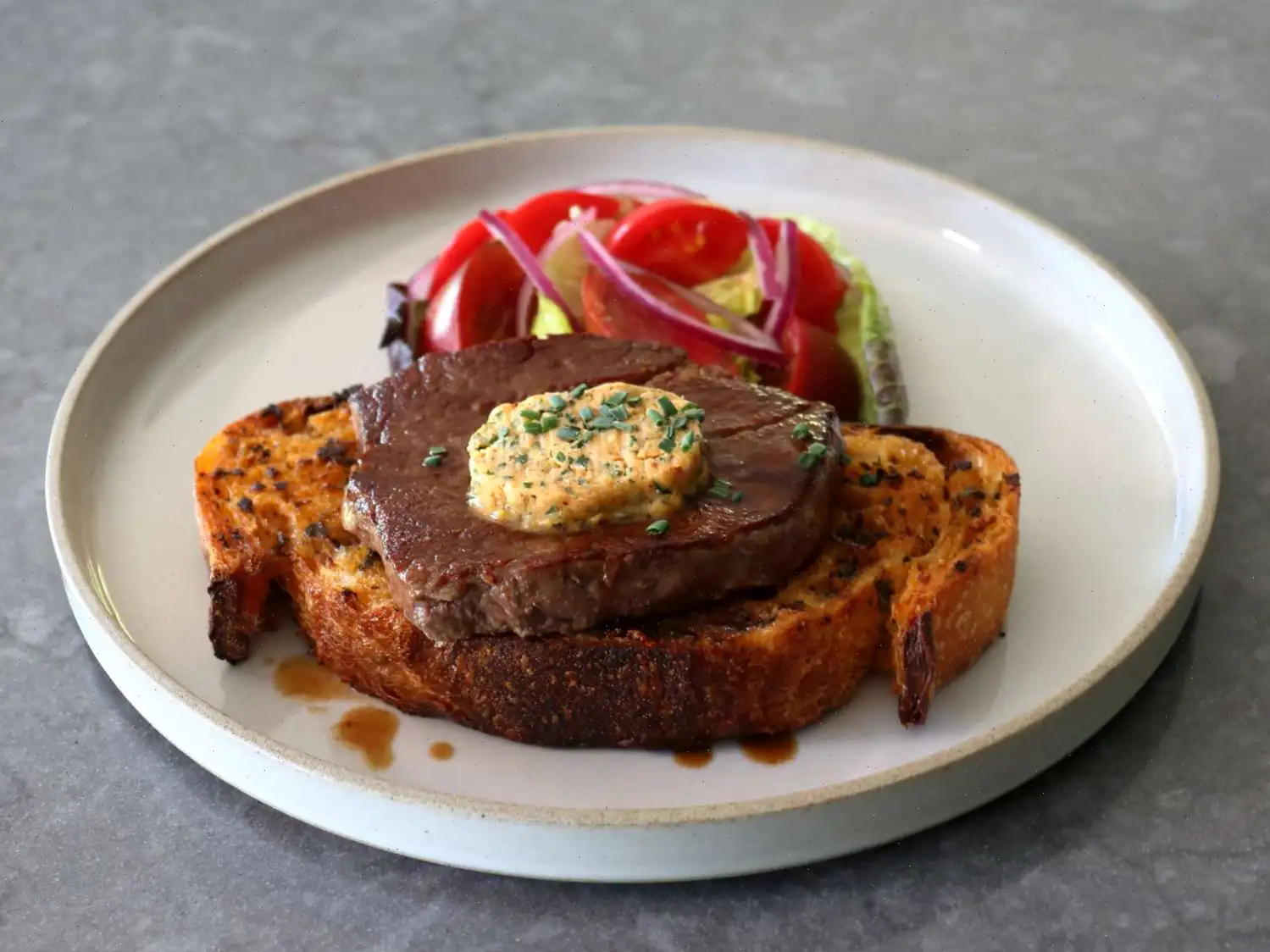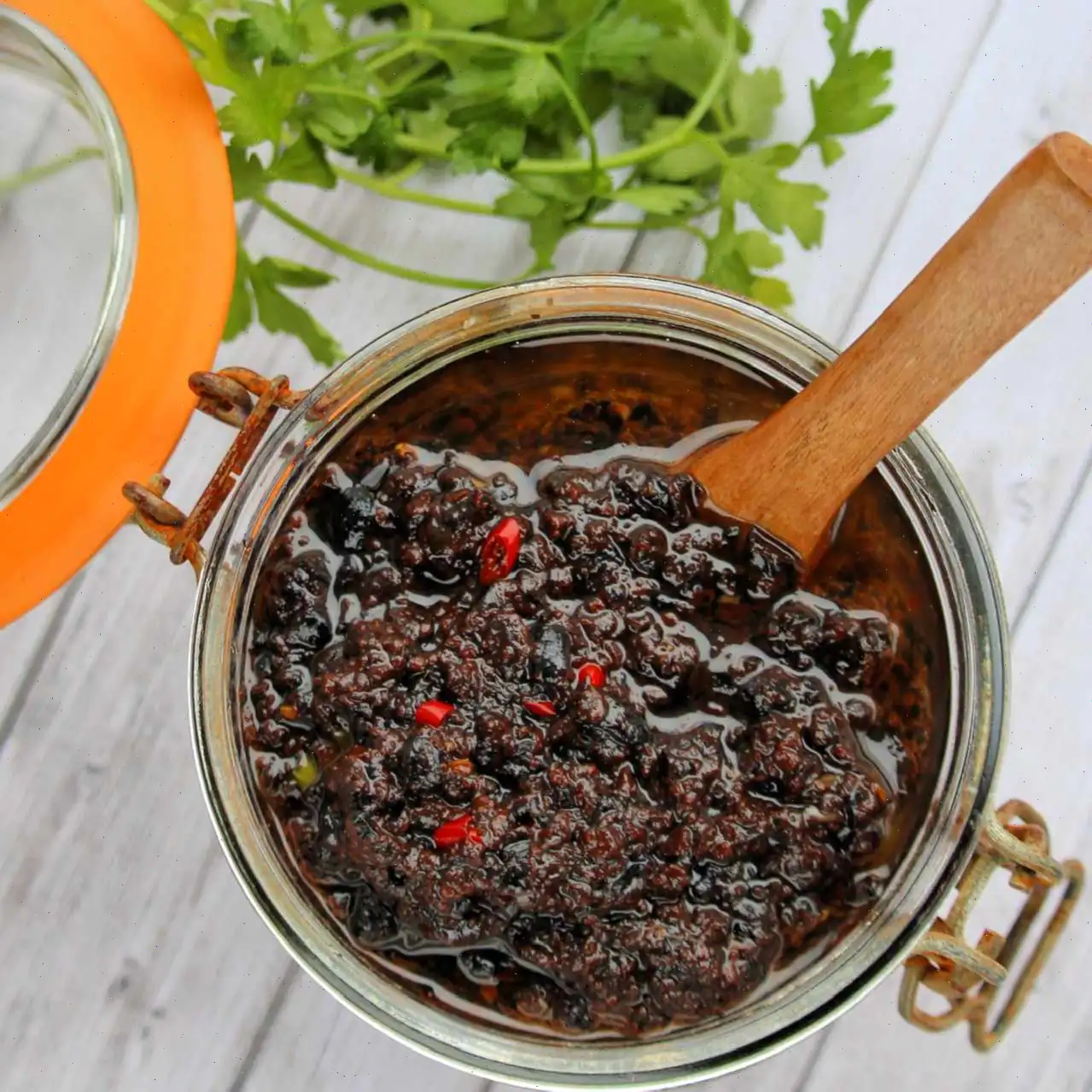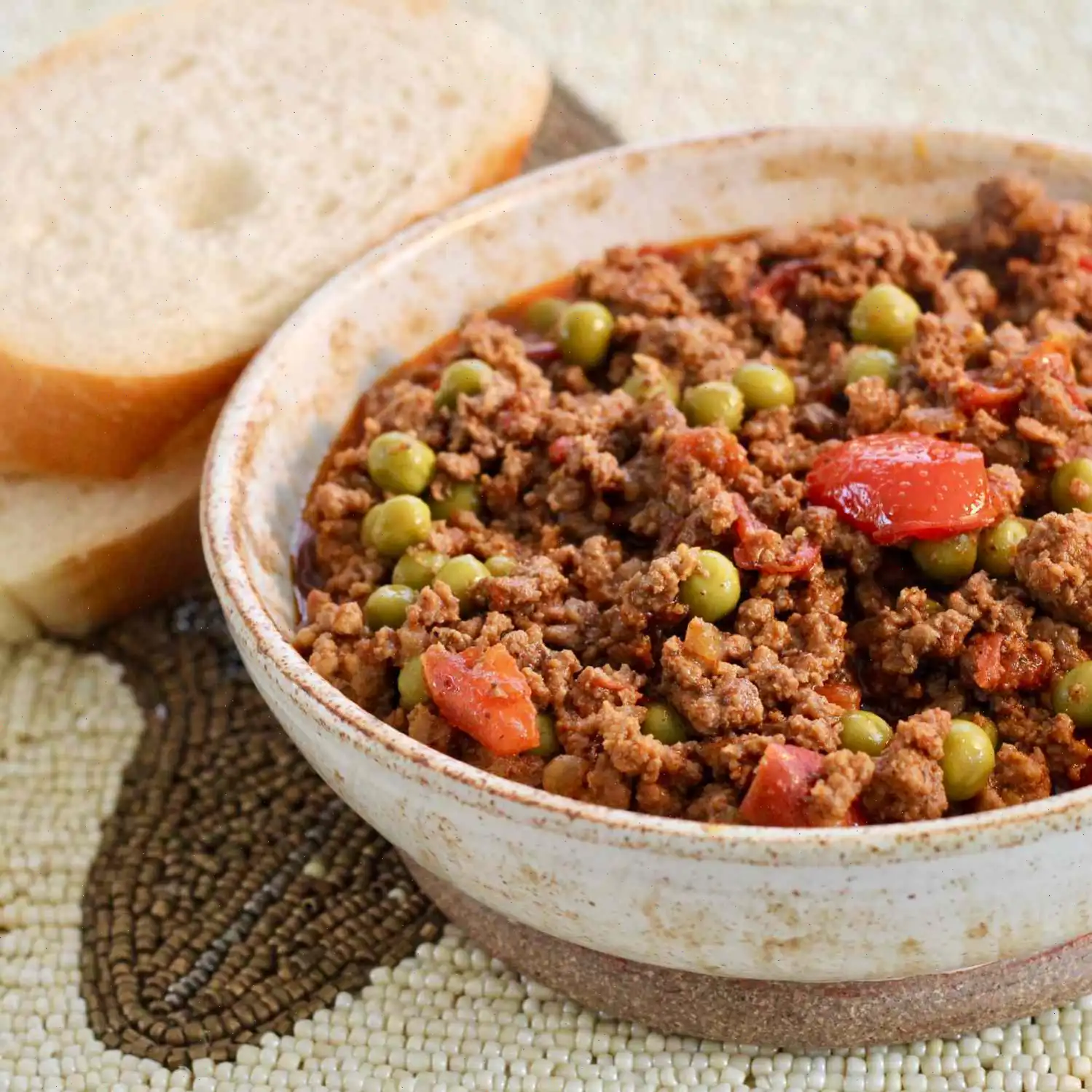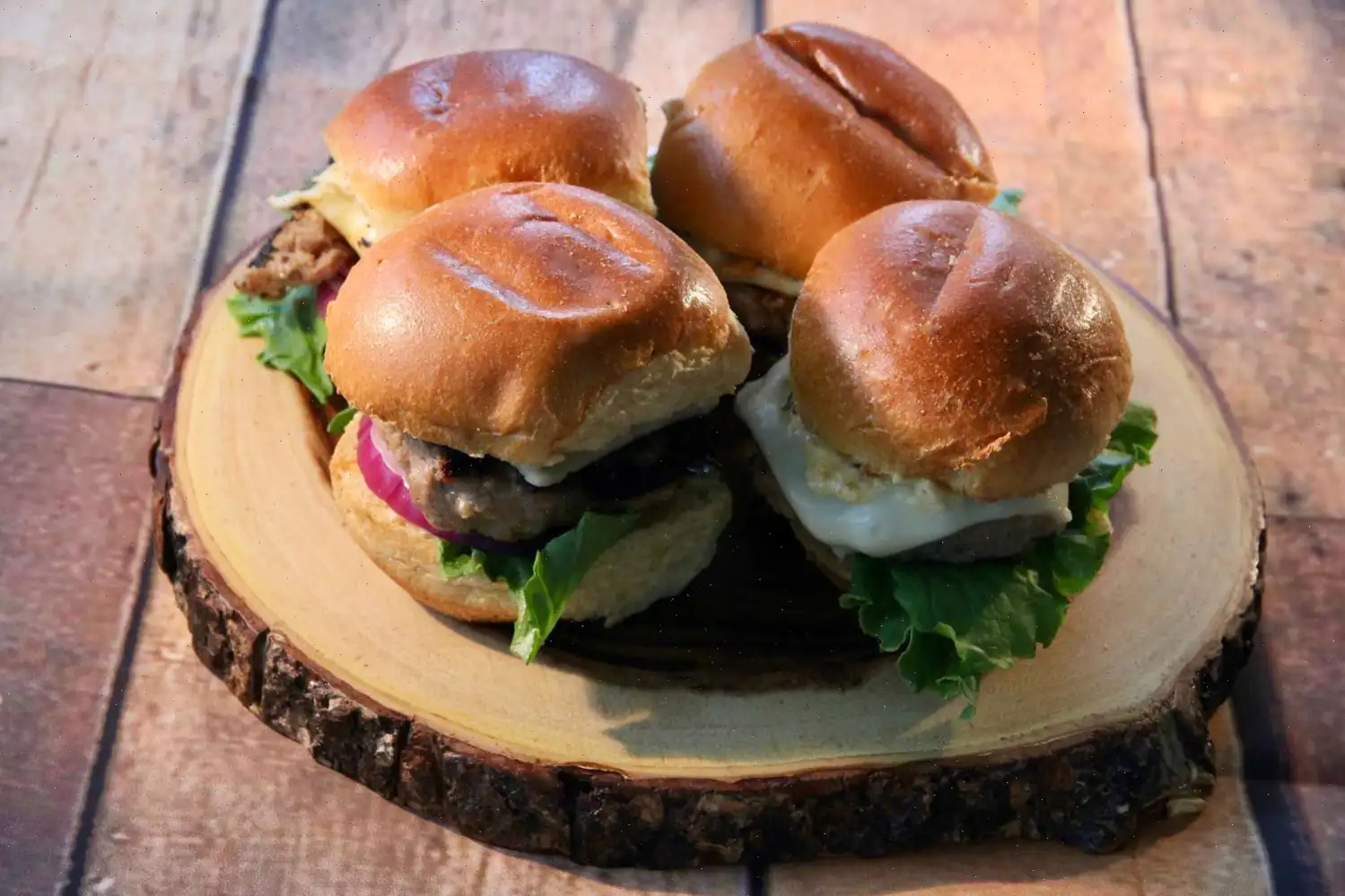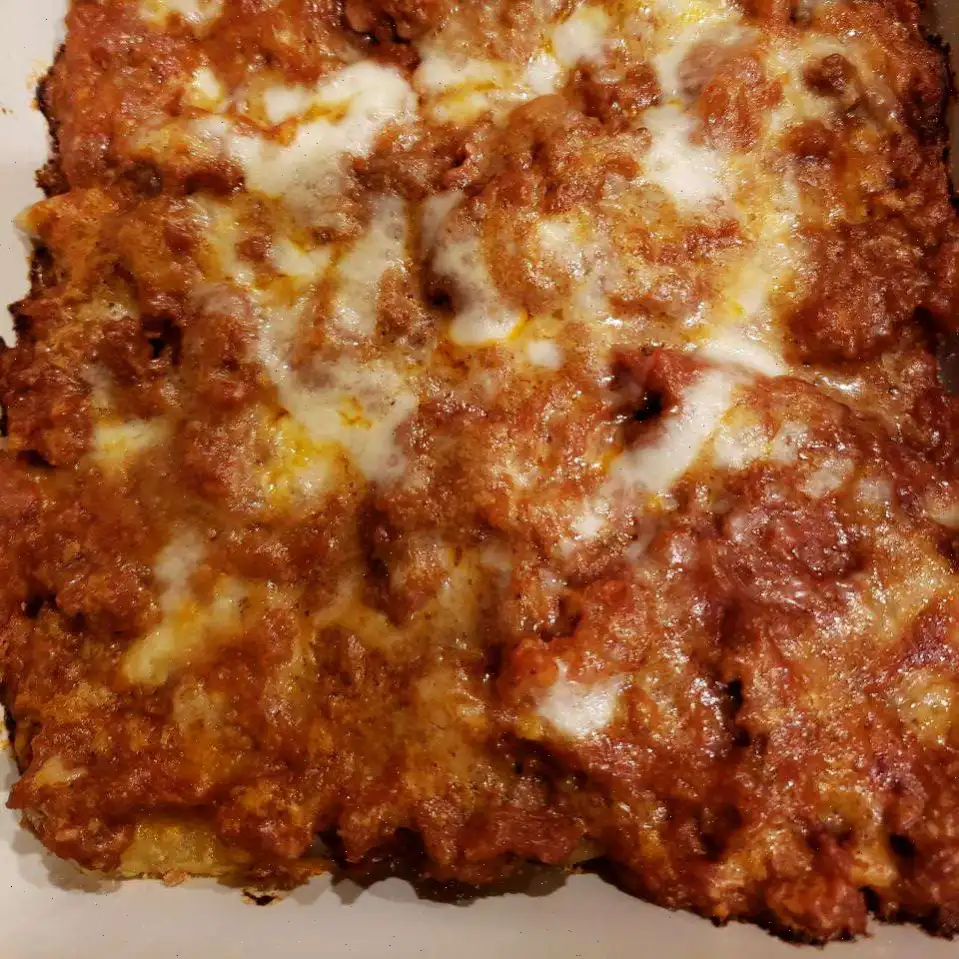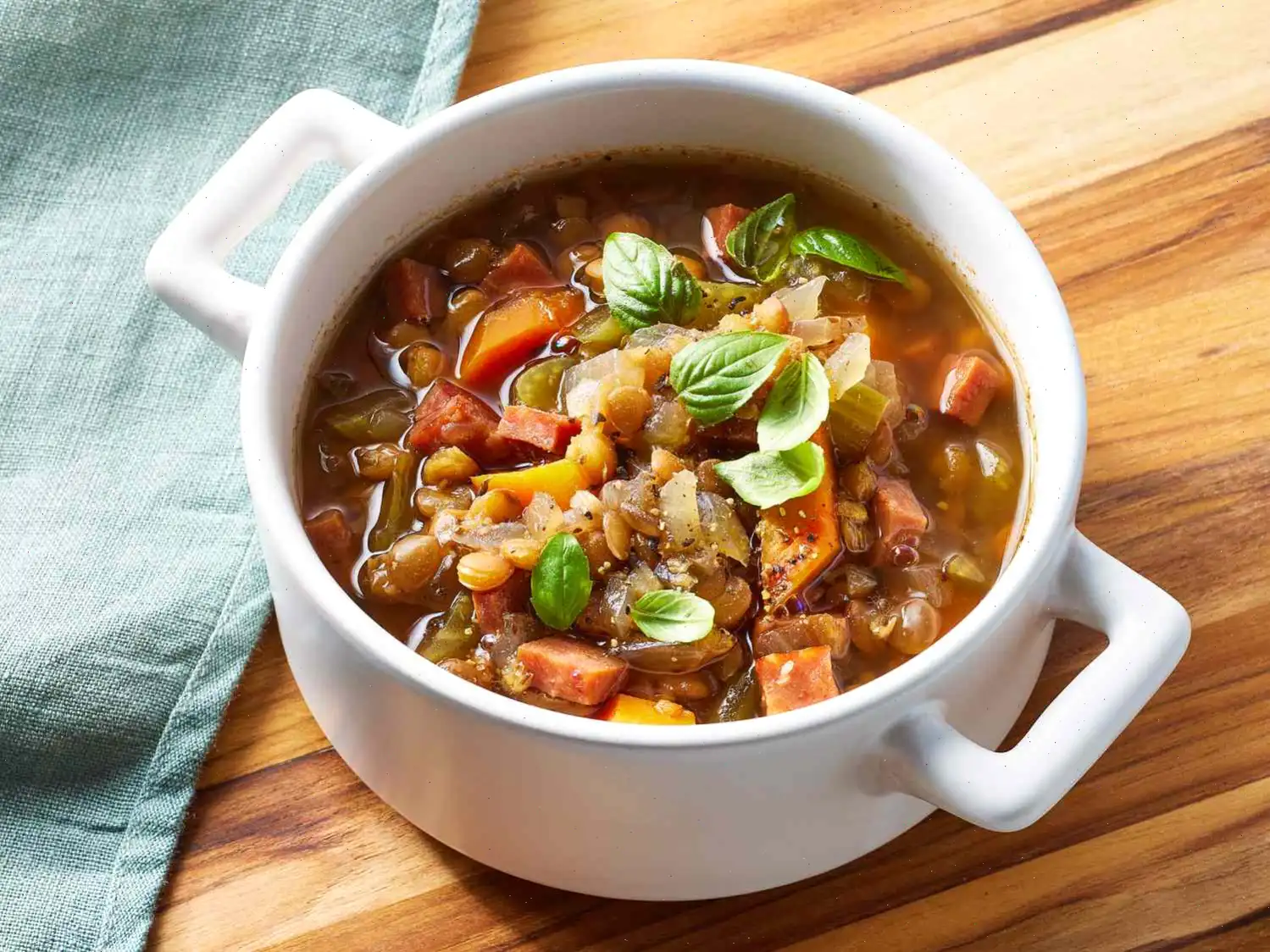
Chicken Teriyaki Recipe
This delicious recipe combines tender chicken thighs with a rich, flavorful sauce made from soy sauce, sake, and rice vinegar. Its easy to make and perfect for a satisfying meal with rice. Follow the steps below for a mouthwatering dish!
Ingredients
- 1 cup low-sodium soy sauce
- 1/4 cup sake
- 3 tablespoons rice vinegar
- 1/3 cup brown sugar (or more to taste)
- 1 tablespoon white sesame seeds
- 1/4 teaspoon crushed red pepper
- 2 teaspoons canola or peanut oil
- 1 teaspoon toasted sesame oil
- 1 teaspoon kosher salt
- 1/2 teaspoon freshly ground black pepper
- 2 pounds boneless skinless chicken thighs, cut into 1 inch pieces
- 2 teaspoons grated fresh ginger
- 1 teaspoon finely minced garlic
- 1 bunch green onions, thinly sliced, divided
- 1 cups cooked rice
Directions
- In a medium bowl, combine soy sauce, sake, rice vinegar, and brown sugar. Whisk well until the sugar is dissolved. Stir in sesame seeds and crushed red pepper, then set the mixture aside.
- Heat both oils in a large skillet over high heat. Season the chicken pieces evenly with salt and pepper.
- Add the chicken in a single layer to the skillet. Let it cook undisturbed for about 4 to 6 minutes, or until the chicken is browned and releases easily from the pan.
- Flip the chicken pieces and cook for another minute. Once done, remove the chicken from the skillet and set aside.
- Reduce the heat to medium and add the grated ginger and minced garlic to the skillet. Stir constantly and cook for about 1 minute, or until fragrant.
- Reserve 2 tablespoons of sliced green onions for garnish, then add the remaining green onions to the skillet. Cook for another minute.
- Pour in 1 cup of the reserved soy sauce mixture and use a wooden spoon to scrape up any browned bits from the bottom of the skillet.
- Bring the mixture to a boil and cook for 3-5 minutes, or until the sauce has reduced by about a third and has thickened slightly. It should have a glossy finish.
- Return the chicken to the skillet and cook, stirring occasionally, until the chicken is coated in the sauce and fully cooked through. The sauce should thicken further as it coats the chicken.
- Serve the chicken over cooked rice and garnish with the reserved green onions.
Nutrition Facts (per serving)
- Calories: 819
- Total Fat: 30g (38% Daily Value)
- Saturated Fat: 8g (40% Daily Value)
- Cholesterol: 369mg (123% Daily Value)
- Sodium: 4025mg (175% Daily Value)
- Total Carbohydrates: 51g (19% Daily Value)
- Dietary Fiber: 2g (8% Daily Value)
- Total Sugars: 21g
- Protein: 84g (169% Daily Value)
- Vitamin C: 5mg (6% Daily Value)
- Calcium: 130mg (10% Daily Value)
- Iron: 6mg (34% Daily Value)
- Potassium: 1269mg (27% Daily Value)
* Percent Daily Values are based on a 2,000 calorie diet. Your daily values may be higher or lower depending on your calorie needs. Nutrient information is based on available data and may vary.
The Origins of Chicken Teriyaki
Chicken Teriyaki is a classic Japanese dish with a rich history rooted in Japans culinary traditions. The word "teriyaki" comes from "teri," meaning shine or glaze, and "yaki," meaning to grill or broil. This reflects the dish's characteristic glossy, flavorful sauce. The technique of marinating and glazing meat dates back several centuries, originally applied to fish, particularly in coastal regions of Japan. Over time, chicken became a popular choice, especially as poultry farming became more widespread during the 20th century.
Regional Variations
While Chicken Teriyaki is enjoyed throughout Japan, different regions have developed unique variations. In Kanto, the eastern region around Tokyo, the sauce tends to be sweeter and thicker, with a strong soy base. In Kansai, the western region around Osaka and Kyoto, the sauce is lighter and more subtle, often using mirin and sake to enhance flavor without overwhelming the chicken. Additionally, some areas incorporate local ingredients like yuzu or ginger for a distinctive regional twist.
Differences from Similar Dishes
Chicken Teriyaki is often confused with other glazed or grilled chicken dishes, but its defining feature is the teriyaki saucea perfect balance of soy sauce, sugar, sake, and mirin, giving it a sweet, savory, and slightly tangy flavor. Unlike general stir-fried or soy-glazed chicken recipes found in Chinese cuisine, teriyaki emphasizes a glossy coating achieved through careful simmering and basting. It is less spicy than Korean bulgogi chicken and generally does not include chili pastes or fermented condiments common in other Asian styles.
Where Its Commonly Served
Chicken Teriyaki is a versatile dish served in homes, bento boxes, and restaurants alike. In Japan, it is a staple in casual dining establishments and izakayas, often accompanied by rice and vegetables. Outside Japan, it has become a popular menu item in Japanese restaurants worldwide and is frequently featured in takeout and fast-casual dining. It is also a common homemade meal, cherished for its simple preparation and comforting flavor.
Interesting Facts
- The glossy appearance of teriyaki sauce comes from the sugar and mirin caramelizing during cooking, giving it a signature shine.
- In the early 20th century, Japanese immigrants in Hawaii popularized chicken teriyaki in the United States, leading to local adaptations with grilled skewers and pineapple marinades.
- Teriyaki sauce is versatile and can be applied to beef, salmon, tofu, or vegetables, making it a staple in modern fusion cuisine.
- Traditional Japanese teriyaki emphasizes natural flavors, avoiding heavy spices, which makes it distinct from many Western interpretations that may add garlic, ginger, or chili in larger quantities.
- Despite its simplicity, Chicken Teriyaki is celebrated for its umami-rich taste, demonstrating the elegance of Japanese flavor balancing techniques.
You can listen to this recipe in AI audio format. Simply click the play button below to listen to the content in a format that suits you best. It’s a great way to absorb information on the go!
FAQ about Chicken Teriyaki Recipe
Comments
SillyChip4951
10/06/2025 01:52:54 PM
This is a very tasty version of chicken teriyaki. I substituted white wine for saki as I did not have any and also tamari for soy sauce and apple cider vinegar for rice vinegar. Served it over rice with the sauce. Yummy!
Brandi
09/02/2025 02:14:12 PM
Even with low-sodium coconut aminos and no added salt, this recipe turned out far too salty—completely inedible. The proportions are off, and anyone following as written will likely waste both time and ingredients. If you try it, I strongly suggest diluting the soy with plenty of water or drastically reducing it. As it stands, this dish was a disappointing waste of time and money.
Kevin
01/20/2025 11:49:20 PM
Lots of flavor, but VERY salty. The amount of ingredients also seems way overboard for the serving size.
LivelyChip9015
09/14/2025 10:13:34 PM
I love this recipe
Mark Lutker
02/13/2025 03:12:22 AM
Perfect simple teriyaki! This was great. Just putting on rice alone was good. For those making comments about salt/sodium, I'm not sure why you are trying to make this to begin with. Any teriyaki sauce is essentially soy sauce (salt) and sugar.
Kimberly Perez
01/20/2025 05:16:02 PM
Made it for lunch, but now I want it for dinner too.
Emma Roberts
11/21/2024 01:17:44 AM
So yummy and comforting 🤤
ragdahl
11/09/2024 12:41:40 AM
After reading the nutrition information I’m running away from this heart attack, cholesterol clogging recipe! Check it out before making, it’s loaded with sodium-4025 mg per serving, cholesterol-369 mg per serving!
Ita
11/06/2024 01:09:40 PM
I'm so pleased to find a good recipe for homemade teriyaki chicken. So many of them are too sweet. The chicken thighs helped add flavor. This is my daughter's favorite takeout and now she can make it at home!


